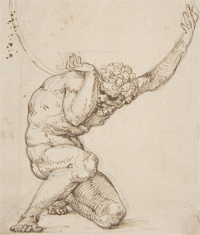
A tense neck is unpleasant for anyone, but for singers, it can be a disaster. The why of it is hardly a mystery. Your vocal tract is in your head and neck. Neck tension will effect how your vocal folds vibrate, the resonance and timbre of your voice, your intonation, and even your ability to produce clear articulation. But how do you address the causes of a tense neck in a way that will stand up to the particular stresses of singing – of performance anxiety, of the dramatic needs of music filled with emotions we associate with stress, such as anger, grief, and despair? And how do you make changes in the face of long and well-established habits of movement and posture?
This workshop will give you tools to transform your movement patterns and incorporate healthy movement into your vocal practice.
Who is this workshop for?
- For singers, all levels.
- Participants will not be asked to do any solo singing or performing in the workshop. However, vocalises — primarily done as a group — will be part of each class.
Workshop Syllabus
This is a four-week workshop. Each class is one hour.
Week I: Nourishing Your Posture
Working on the neck without attending to the posture of the whole body is like pulling a piece of wheeled luggage with one wheel missing. (Just thinking about that makes my neck tense!) So we’ll start off our care and feeding of the neck with some attention to whole-body alignment, and how a dynamic approach to posture can serve all of your movement needs, whether you’re making that dramatic gesture in the middle of your aria or reaching for the box of cereal on top of the fridge.
Week II: Dem Bones!

In Greek Mythology, Atlas is the god who holds up the world. Atlas is also the name for the first vertebra of the spine, the one connecting the head and neck. If we let it do its job, the atlas holds up the world of our mind very nicely. In this week, we’ll look at the bones of the head and neck and learn how to embody their shape and function to make the job of holding up our heads so much easier.
Week III: Muscles!
This week, we’ll learn some general techniques for givin’ the muscles some love, with specific attention to our friend the neck and it’s kissin’ cousin the jaw. We’ll learn something called the sliding filament theory of muscles. That may sound complicated, but it really isn’t, and it’s a great way to learn how to work with any muscle in your body. Then we’ll start to look at specific muscle groups in the neck, how to feel them and work with them to produce healthy muscle use and tone.
Week IV: A Balanced Larynx

The larynx is supported from above and below by muscles connecting to the skull, tongue, and jaw; to the shoulder blades, collar bones and sternum. We will identify these muscle groups, learn how to feel and work with them in our own bodies, and understand some of the technical issues that can come up for singers when these muscles are out of balance.